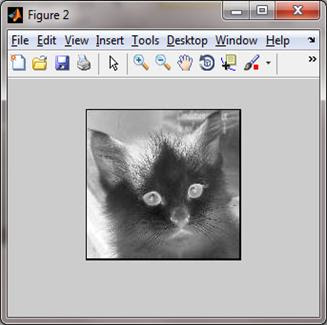Matlab Program For Contrast Stretching
Microsoft Wireless Photo Keyboard 1027 Software here. I have to import a greyscale image into matlab, convert the pixels it is composed off from unsigned 8 bit ints into doubles, plot a histogram, and finally improve the image quality using the transformation: v'(x,y) = a(v(x,y)) + b where v(x,y) is the value of the pixel at point x,y and v'(x,y) is the new value of the pixel. My primary issue is the value of the two constants, a and b that we have to choose for the transformation. My understanding is that an equalized histogram is desirable for a good image.
Other code found on the Internet deals either with using the built-in MATLAB histeq function or calculating probability densities. I've found no reference anywhere to choosing constants for the transformation given above. I'm wondering if anyone has any tips or ideas on how to go about choosing these constants. I think the rest of my code does what it's supposed to: image = imread('image.png'); image_of_doubles = double(image); for i=1:1024 for j=1:806 pixel = image_of_doubles(i,j); pixel = 0.95*pixel + 5; image_of_doubles(i,j) = pixel; end end [n_elements,centers] = hist(image_of_doubles(:),20); bar(centers,n_elements); xlim([0 255]); Edit: I also played a bit with different values of constants.
The a constant when changed seems to be the one that stretches the histogram; however this only works for a values that are between 0.8 - 1.2 (and it doesn't stretch it enough - it equalizes the histogram only on the range 150 - 290). If you apply an a of let's say 0.5, the histogram is split into two blobs, with a lot of pixels at about 4 or 5 different intensities; again, not equalized in the least. The operation that you are interested in is known as linear contrast stretching. Basically, you want to multiply each of the intensities by some gain and then shift the intensities by some number so you can manipulate the dynamic range of the histogram. This is not the same as histeq or using the probability density function of the image (a precursor to histogram equalization) to enhance the image.


Histogram equalization seeks to flatten the image histogram so that the intensities are more or less equiprobable in being encountered in the image. If you'd like a more authoritative explanation on the topic, please see my answer on how histogram equalization works: In any case, choosing the values of a and b is highly image dependent.
However, one thing I can suggest if you want this to be adaptive is to use min-max normalization. Basically, you take your histogram and linearly map the intensities so that the lowest input intensity gets mapped to 0, and the highest input intensity gets mapped to the highest value of the associated data type for the image. Easy Ip Software. For example, if your image was uint8, this means that the highest value gets mapped to 255. Performing min/max normalization is very easy. It is simply the following transformation: out(x,y) = max_type*(in(x,y) - min(in)) / (max(in) - min(in)); in and out are the input and output images. Min(in) and max(in) are the overall minimum and maximum of the input image. Max_type is the maximum value associated for the input image type.
Contrast adjustment remaps image intensity values to the full display. Lic Of India Form 5074 there. Find limits to contrast stretch. Image Segmentation and Thresholding Code Examples. Contrast Enhancement. Stretching the original gray levels to the range ofstretching the original gray levels to the. Sample Matlab Code function histogram_eq. Contrast adjustment remaps image intensity values to the full display. Find limits to contrast stretch. Image Segmentation and Thresholding Code Examples. Matlab Image Processing - increasing contrast. Other code found on the. The operation that you are interested in is known as linear contrast stretching.